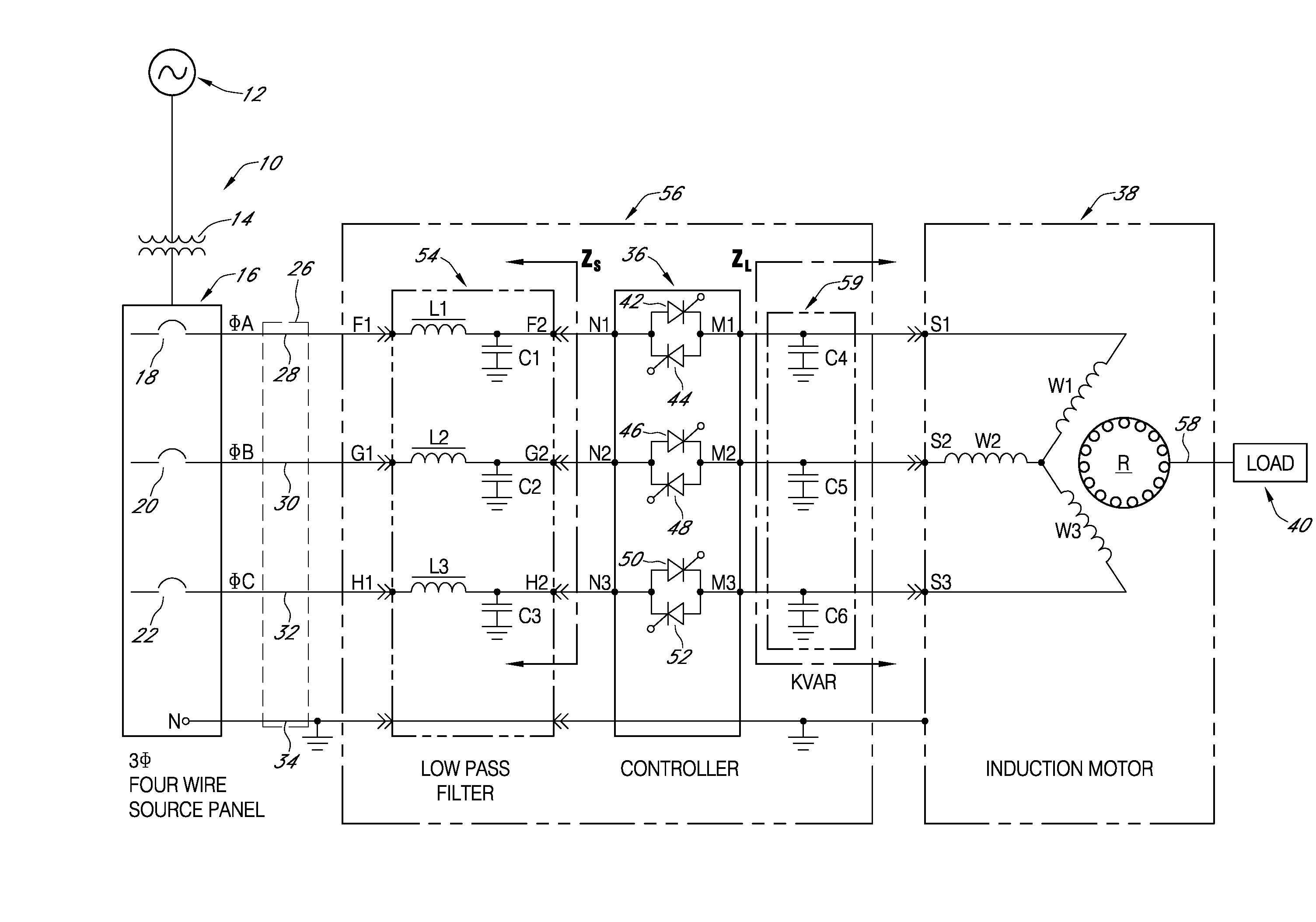Such noise signals can originate from the power source, the distribution network, local and remote loads coupled to the network,
lightning strikes and distribution equipment malfunction.
The AC
supply current delivered from a public utility is not a pure
sine wave and contains
harmonics that interfere with proper operation of connected equipment.
Additionally, noise and switching transients may be introduced from active loads.
This will introduce harmonics and
high frequency noise on the power distribution conductors.
Each load can conduct a significant level of noise and
harmonic currents back onto the power line, causing
distortion of the power waveform.
Different loads and control devices produce different types and degrees of
distortion that may interfere with the operation of the equipment and machines that are being supplied by the distribution network.
The injection of harmonic currents into the power
distribution system can cause overheating of transformers and high neutral currents in
three phase, grounded four wire systems.
As harmonic currents flow through the
distribution system,
voltage drops are produced for each individual harmonic, causing
distortion of the applied
voltage waveform, which is applied to all loads connected to the distribution
bus.
Induction motors can be damaged or degraded by harmonic current heating if the supply
voltage is distorted.
Each harmonic of the
fundamental frequency, depending on whether it is a positive, negative, or zero sequence, and its percentage of the fundamental, can have an adverse affect on motor performance and temperature rise, as well as increase the energy costs of electrical service that is charged by the utility
service provider.
Most utilities charge a penalty to customers when the customers total load
power factor is low.
Harmonic current adds to the RMS value of the fundamental current supplied to the load, but does not provide any useful power.
An unacceptable load current
phase angle difference can be expected because of the high inductive impedance presented by the
stator windings of an induction motor.
When the induction motor is operating under discontinuous load conditions, or when the load is non-linear, high harmonic currents will result, degrading motor performance and reducing
power factor.
Harmonic currents produced in the
load circuit or that are conducted along the
branch power distribution line from remote non-linear sources may find a
resonance with the KVAR capacitors, and the resulting
high current may cause the capacitors to fail.
These harmonic currents, when combined with the inductive
reactance of the distribution network, can also cause premature motor failure due to excessive current flow, heat build-up and random breaker
tripping.
Various problems arise in the operation of conventional controllers, particularly when controlling power applied to non-linear loads.
The constantly changing load between peak minimum and maximum values creates severe control difficulties for
power factor control systems which must continuously adjust the power delivery to maintain optimum
motor efficiency and economy.
Because of the fast on-off switching action (fast dv / dt) of the thyristors,
high peak voltage and high
switching frequency, the input current on the
supply side of the power controller becomes distorted with
high frequency switching transients, which cause an increase of harmonic components in the AC power delivered to the induction motor.
Moreover, spurious noise and harmonic currents from remote sources that are conducted down the
branch distribution circuit can interfere with the proper switching operation of the controller itself, resulting in loss of
power control.
 Login to View More
Login to View More  Login to View More
Login to View More 


